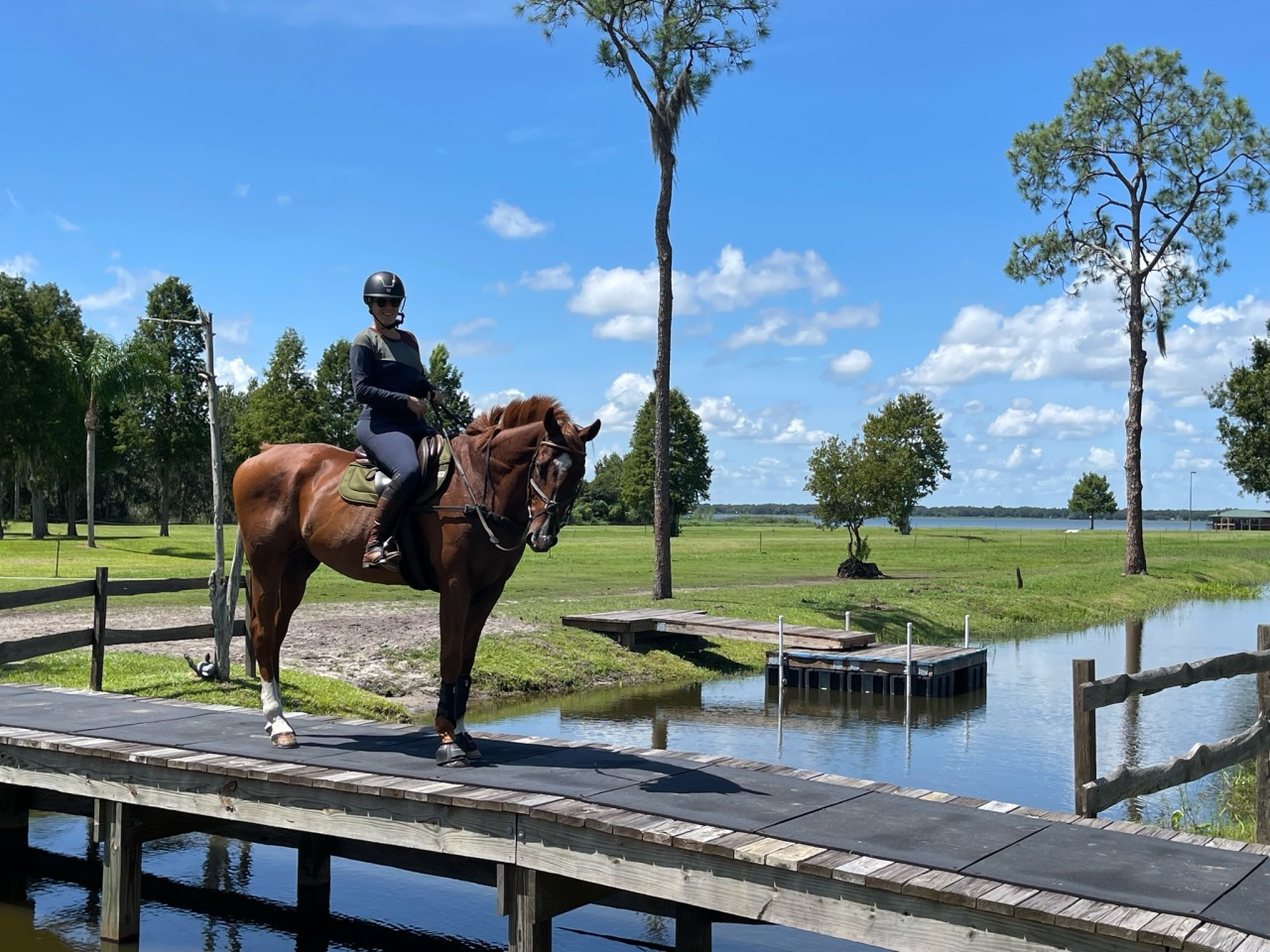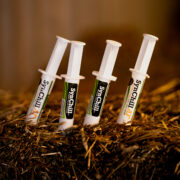What I Learned At Cowboy Camp

It’s been a slow summer. Excruciatingly slow. My horse is recovering from an injury and truly, time couldn’t be moving any slower.
But in recent weeks we’ve had some excitement. Our veterinarian recently cleared my horse to return to under saddle work, and we got the OK to go from walking to trotting. It’s progress, and I’m grateful for any step – no matter how small – that gets us closer to full recovery.
My vet also made a suggestion recently that was curious and different: During this down period, she suggested incorporating exercises I can do under tack and in-hand to help my horse think more about his posture and become more aware of his balance and foot fall. She said a great place to do this may be a natural horsemanship obstacle course.
I’ve seen them before – western-style camps where riders and horses cross bridges, drag poles, step through scary pool noodles and under hanging tarps. It definitely is NOT my forte as an English discipline rider. But it sounded fun, different, and challenging in just the right way (mentally vs. physically) for where we are right now. So I enlisted a friend – who has a 2-year-old eventing prospect – and off we went to “Cowboy Camp.”
Being in Central Florida, I’m lucky to have several professional “obstacle course” venues to choose from. For this trip, we visited Nancy Slater’s Cowboy Camp. Nancy is horse behavior professional and American Competitive Trail Horse Association National Champion. She uses techniques developed by Tom and Bill Dorrance, Ray Hunt, Pat and Linda Parelli in her training. Along the way she built an obstacle course on her sprawling, lovely property which she calls Cowboy Camp.
When we arrived, we took some time to get acquainted with the place and the obstacles around us. There was a lot to do – and we had a lot to learn. Every obstacle can be done in-hand and while mounted. They required the horses to walk across thin bridges, back up, turn around, find their balance on semi-moving objects and react to steps, slopes and uneven terrain.
My horse took it all in stride, but many of the obstacles weren’t as easy as they looked! My gelding is a large horse at 17 hands, much bigger than the Quarter Horse-type counterparts we saw maneuver the course with ease. But after a few awkward attempts at some of the elementary exercises, I could really see my horse using some serious brain power to make his way through the tasks at hand. It was only one day and for a couple of hours, but I did see how he became more aware of his body.

There were plenty of obstacles that were too advanced for us first-timers (nor were they safe to try at this point of my horse’s rehab plan). We watched Nancy work with a Florida Cracker Horse gelding, standing quietly as she allowed the horse to assess the question the obstacle presented, and applying slight pressure in the form of encouragement to step forward and try it. There were lots of pauses for “licks and chews” as the horse considered what was required of him.
By the end of the day, my horse and I were riding over water bridges, into ditches, up and down slopes and bravely trying lots of things we’ve never done or seen before. This is a great exercise to “desensitize”, but also to help horses become aware of their steps, balance and ability, just as my vet said. We’ll be back for another whirl post-injury, for sure!


